Destiny 2, one month on: What’s working, what isn’t, and how do we feel about the MIDA Multi-Tool?
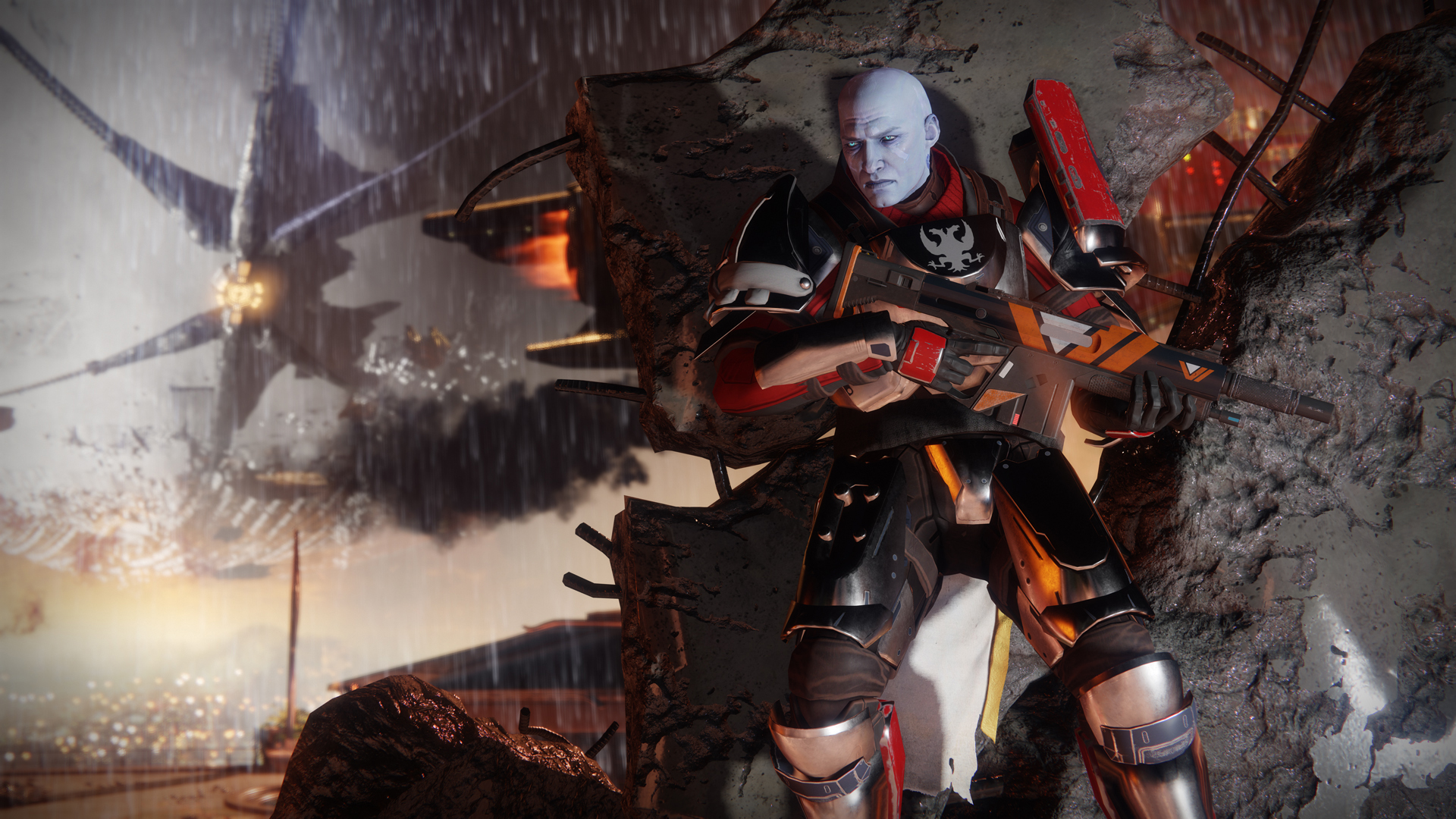
Destiny 2 is just over a month old. It’s been a heady blur of shooting, looting, decrypting and cashing in many, many, many Tokens, but we’ve now got an even greater grasp of the bigger Destiny 2 picture. Even after half the team spent two weeks reviewing it, and constantly plaything throughout September and October, it’s important to check in on how we now feel about the game. After all, we’re likely looking at a three year journey here. Destiny 2 isn’t going to be defined only by its (excellent) launch experience, but by how it grows, evolves, and changes around us over the long-term.
- Destiny 2 guide: complete campaign walkthrough and guide
- Destiny 2 levelling guide: how to get to power level 280 and beyond (while playing solo)
So, how are things settling, a month later? How exciting is Destiny 2 to play now that we’ve finished the campaign and are waist-deep in the high-level endgame? How’s the RPG side of things panning out, and how’s the Crucible? Are any particular weapons rising to the top a little too prominently, and is any rebalancing needed? All of these questions will be answered below, although you almost certainly know the answer to that last one. But I’ll also try to offer potential solutions where there are issues, because I am unremittingly useful like that.
Activities and content
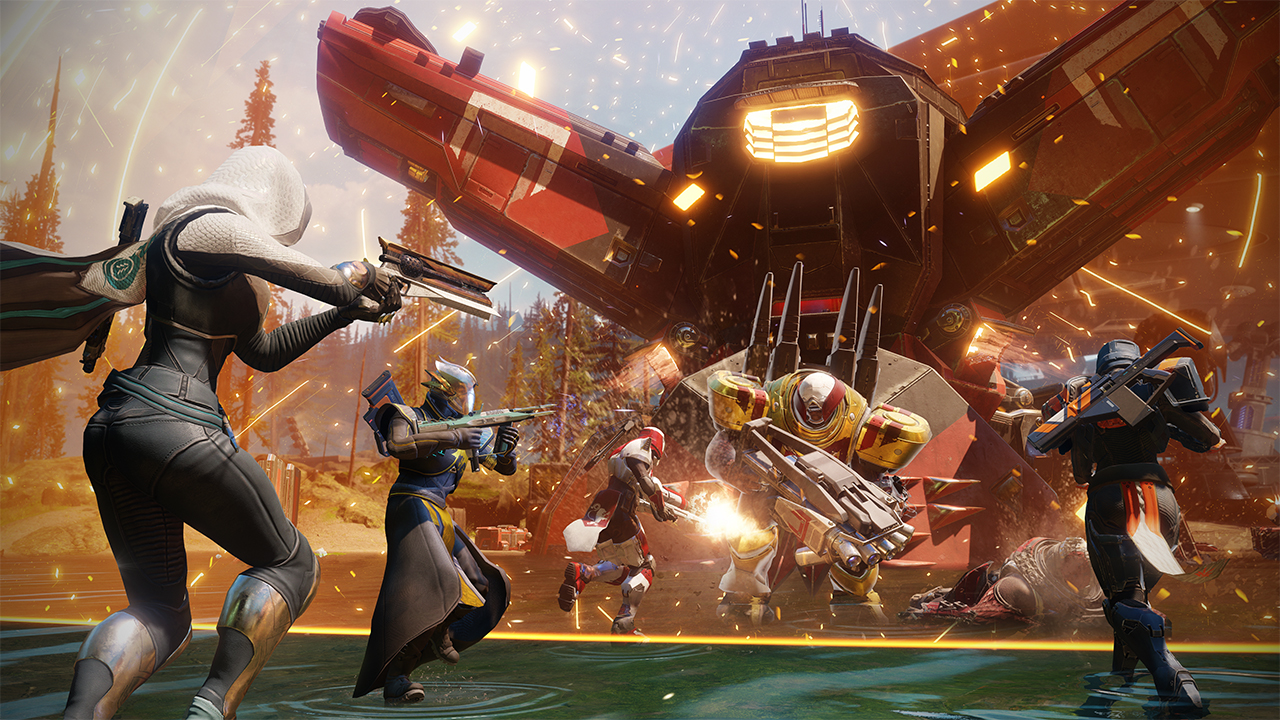
Long the bugbear of the first game, at least during year one, Destiny 2's content suite obviously does a much, much better job of populating its world with worthwhile things to do in the long-term. I've covered all of this stuff in detail in my review, so I'll hold off doing so here. But suffice to say, Destiny 2 is packed.
But the thing that's really impressing me this time around is how well Bungie has nailed the formula for keeping replay fresh. That formula goes as thus:
(Consistently fun combat x meaningful narrative purpose and depth) + Surprise gameplay evolutions = Satisfying long-term loot-chase.
The first game only really applied the combat and loot elements to its repeat appeal, but by adding more in-world justification and experiential evolution to its already deeper, richer offering, Destiny 2 does a much, much better job. Heroic public events, with secret triggers for better loot drops, continue to be exciting and relevant - with brand new events dropping into the ecosystem recently - while the recent inaugral week of Faction Rallies excelled in refreshing the appeal of open-world exploration while exanding the narrative scope of the world in general. Ditto Cayde-6's weekly Stash Chests, and the weekly Flashpoint Challenge.
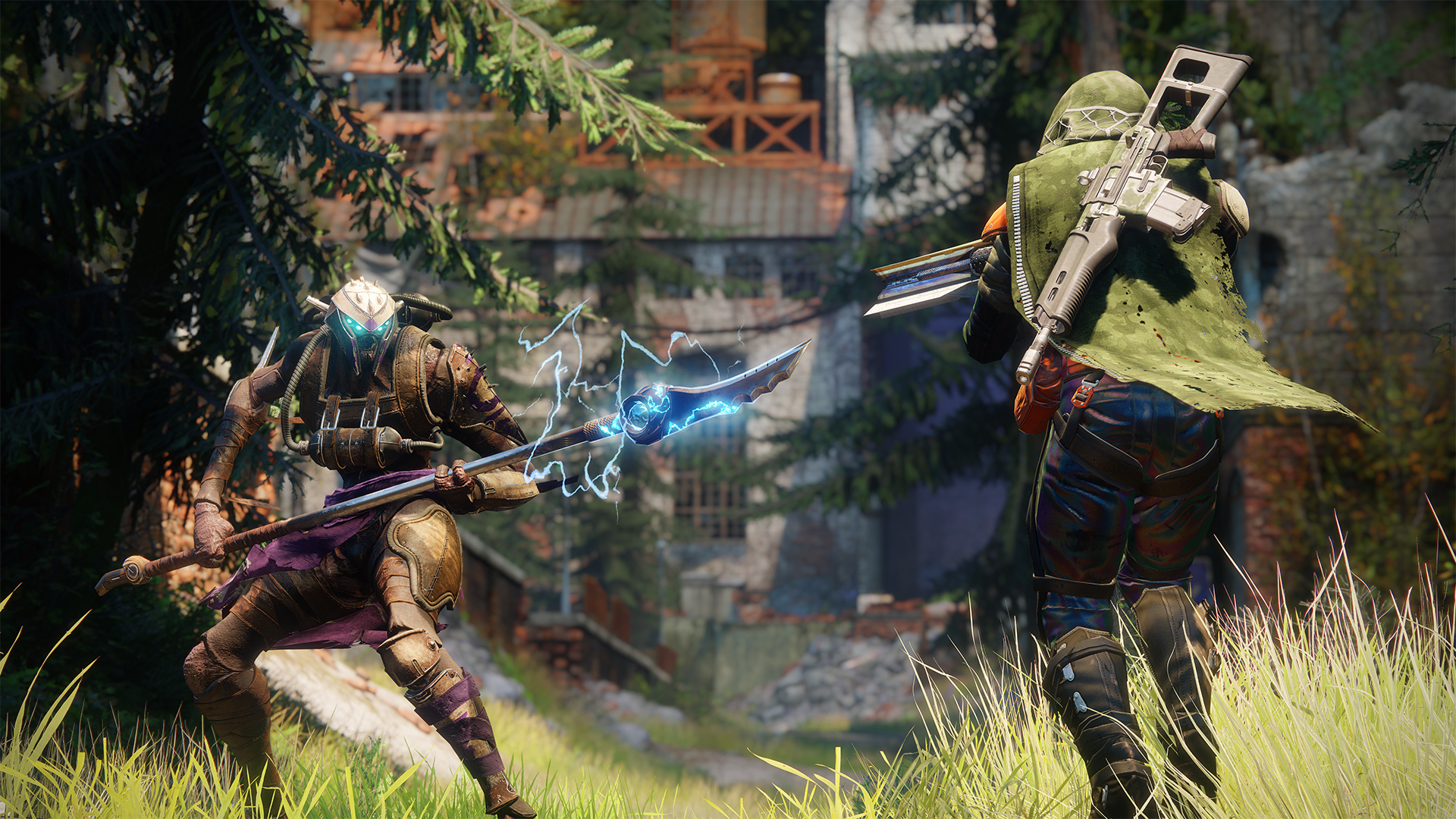
There are welcome changes within the more 'set' content as well. The self-remixing Strike playlist - whose missions swap in a raft of alternative dialogue and storytelling takes, while randomly changing up encounters with entirely different enemy sets – still manages to throw up surprises a month later.
Sign up to the GamesRadar+ Newsletter
Weekly digests, tales from the communities you love, and more
A higher-level, Prestige Strike playlist would be a nice next step, now that the standard version is getting a bit easy for higher level players, but it’s not an immediately pressing need. Destiny 2 is acutely aware of how much replay its activities are going to get in between major expansions, and does a much better, more deliberate job of refreshing them than its predecessor did.
Post-campaign progression
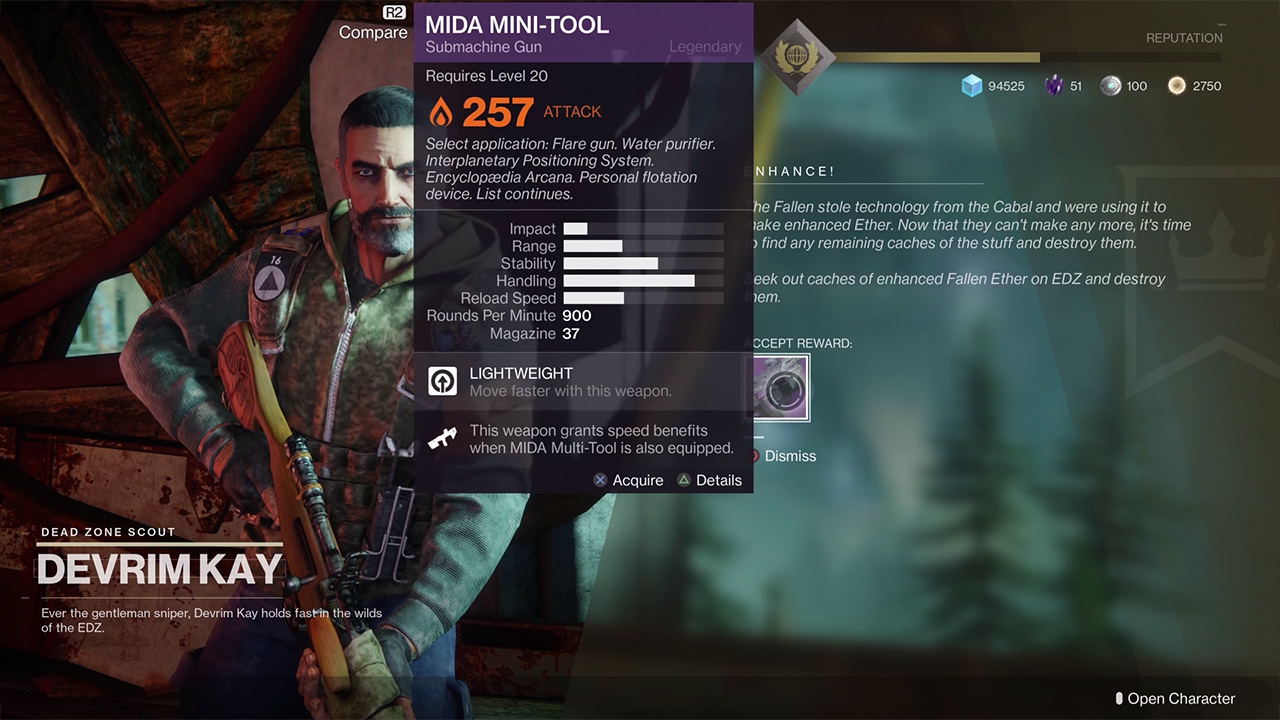
As for the bigger picture of high-level play, things are good. The most resounding positive is that the Token-based progress system - which furnishes a near-enough universal currency for all activities across the board, which can in turn be exchanged for random gear drops - remains brilliant. The separation of gear and gameplay is one of the most quietly profound master-strokes Bungie has played with Destiny 2, for two main reasons.
Firstly, it largely breaks down the first game's inherent link between worthwhile, late-game loot and the demand for relentless, high-level play at the expense of all else. With good gear eventually inevitable whatever you choose to do, smaller-scale activities such as Public Events remain as relevant as they are fun, even when you're knee-deep in uber-level content such as the Leviathan Raid.
And by the same note, the system finally makes real the first game's promise that any individual player's schedule, from half-hour dabbles to whole-day binges, can be profitable. I have a friend who loved the first game but could never actually play it beyond a certain level due to a heavy combination of work and dad commitments. He's deep into Destiny 2, with no signs of trouble. The grind is dead, replaced by a long-term game that encourages via constant reward rather than stringent demands and lofty promises.
It should be noted here too, how well the new approach to weekly reset content works. Every Tuesday, a set of Milestone challenges will land, and each will deliver a material reward. With many of these offering a clear and simple route to the exact 'Powerful Gear' required to level up, Destiny 2 offers hardcore players a guaranteed weekly levelling period with which to punch through any plateau they might have hit. However the rest of the week might go in terms of Exotic drops, Raid gear, and the rollercoaster of glory and devastation that is Trials of the Nine, top-level Guardians will always be able to push forward.
Simultaneously, the more time-strapped player can pace that content out over a week, certain that the game will constantly reward them for the time they can give. It's a simple set-up, but it works for everyone.
High-level character development
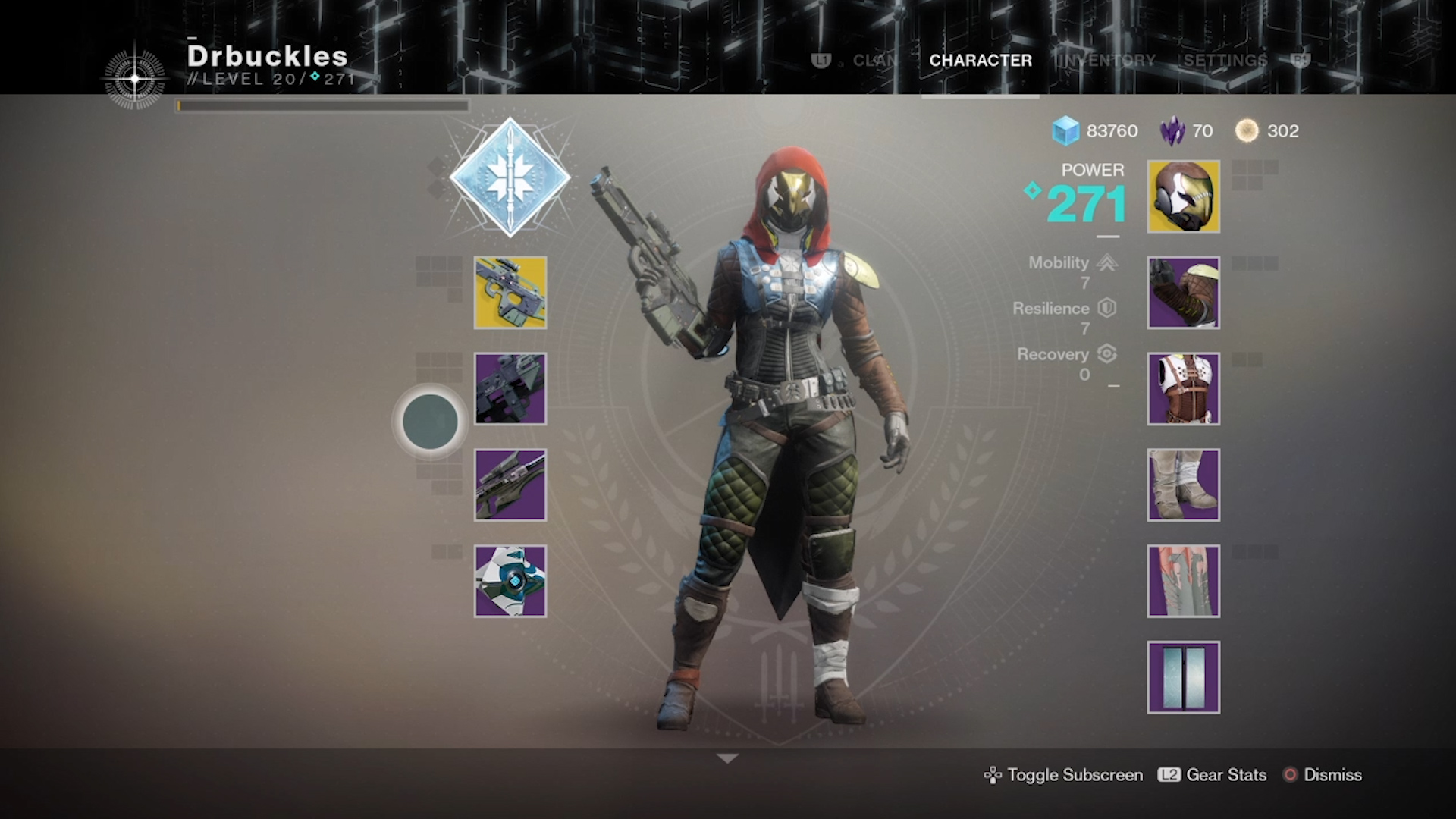
Here's where we hit the mixed feelings. Because while the sandbox of potential gear is in a healthy state - driven by Bungie's 'small but steady' approach of introducing new sets via special events such as the Faction Rallies and Iron Banner – it currently feels like there's less immediate RPG scope in Destiny 2 than there was in the first game.
- Destiny 2 infusion guide - how it works and how to get the best stuff
- Destiny 2 Chest locations guide - find every Region, Lost Sector, and Treasure Cache
Where the first game's subclass skill trees were a resolutely free-form, mix-and-match affair, allowing Guardians to make granular tweaks to resonate with chosen character stats and gear perks for a carefully curated end result, Destiny 2's binary choice between two Bungie-authored set-ups feels like it needs something more to sustain it for the long-term game. Admittedly, those two perk clusters are really well-authored. In fact, a few of them play directly into the specific ways I designed my character builds in year three of the first game. But I'm not sure how, alone, they're going to carry (at least) three years' worth of Destiny 2.
There are definitely feasible solutions though. For starters, if Bungie is going to continue feeding the sandbox with incremental additions of gear, then it can - and arguably should - use that regular drip-feed to seed in progressively more complex, unique, and resonant gear-perks, with which we can craft increasingly specialised character builds without the need to tinker with class abilities too much. I've managed to put together a couple of brilliant builds using specific Exotic gear perks, despite the restrictions, but I couldn't help feeling somewhat funnelled along the way. Freshening things up with a bigger variety of Legendary perks might go a long way.
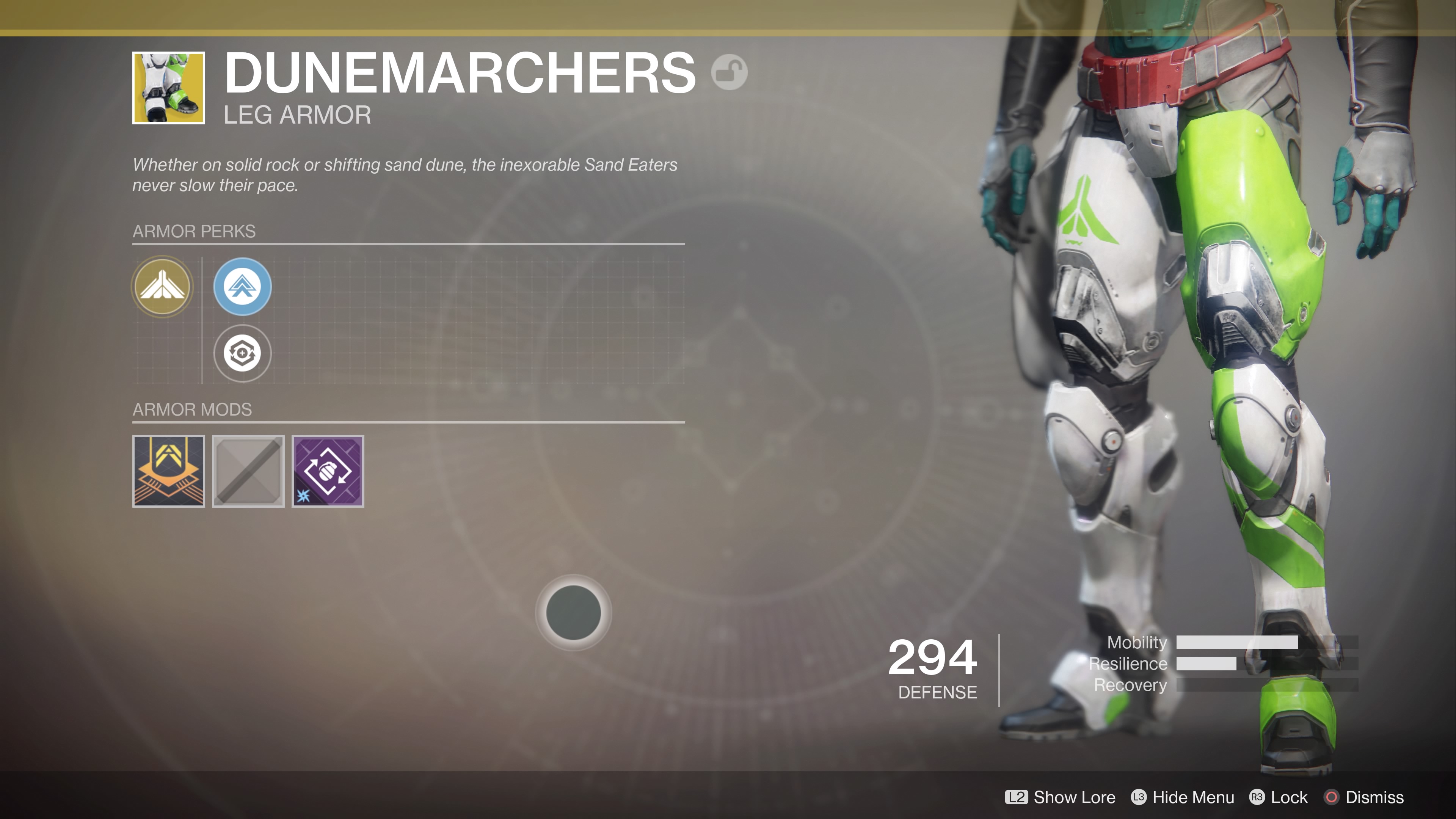
This would also solve the 'problem' - severity depends on your perspective - of Destiny 2's axing of randomised perk rolls. With every drop of every individual gun and armour piece now identical, some players have lost the thrill of the chase of specific, ideal editions of favoured gear. An influx of more specialist, rarer perks could easily reinstate some of that treasure hunt factor, as well as add the deeper layer of more integrated character building Destiny 2 is going to need in the long-term.
A second phase of Legendary gear mods with more versatile effects would be very welcome too, though obviously that would be much more difficult to balance in order to avoid the advent of some deeply broken god-builds. And however mods evolve in the future, it's becoming apparent that we could do with some tweaks to the economy that fuels them. At the moment their high (and somewhat arbitrary) Glimmer cost creates a frustrating artificial road-block rather too frequently.
- How To unlock every Guardian class and subclass in Destiny 2
- Here's how you get a Sparrow in Destiny 2
Obviously some system is necessary to keep levelling moving at a sensible pace, but at the moment it’s too severe. More ways of earning Glimmer would be a welcome fix, or, perhaps better, some way of converting our growing excesses of Legendary Shards into a useful currency. Any Guardian who’s been playing long enough now likely has way too much of one, and is constantly running out of the other.
As for the bigger, RPG picture, it could well be that Bungie is deliberately holding more complex ideas back for later waves of the sandbox, to allow Destiny 2's clearly courted, more casual fanbase to fully comprehend the game's ultimate scope before things get more complicated - the first game very much overwhelmed with unexplained, initially unnecessary systems early on. And if that's the case, then great. But it is something that could do with attention at some point. I have a great time with my non-Exotic gear, but I’d like it to have a greater sense of purpose.
Crucible PvP
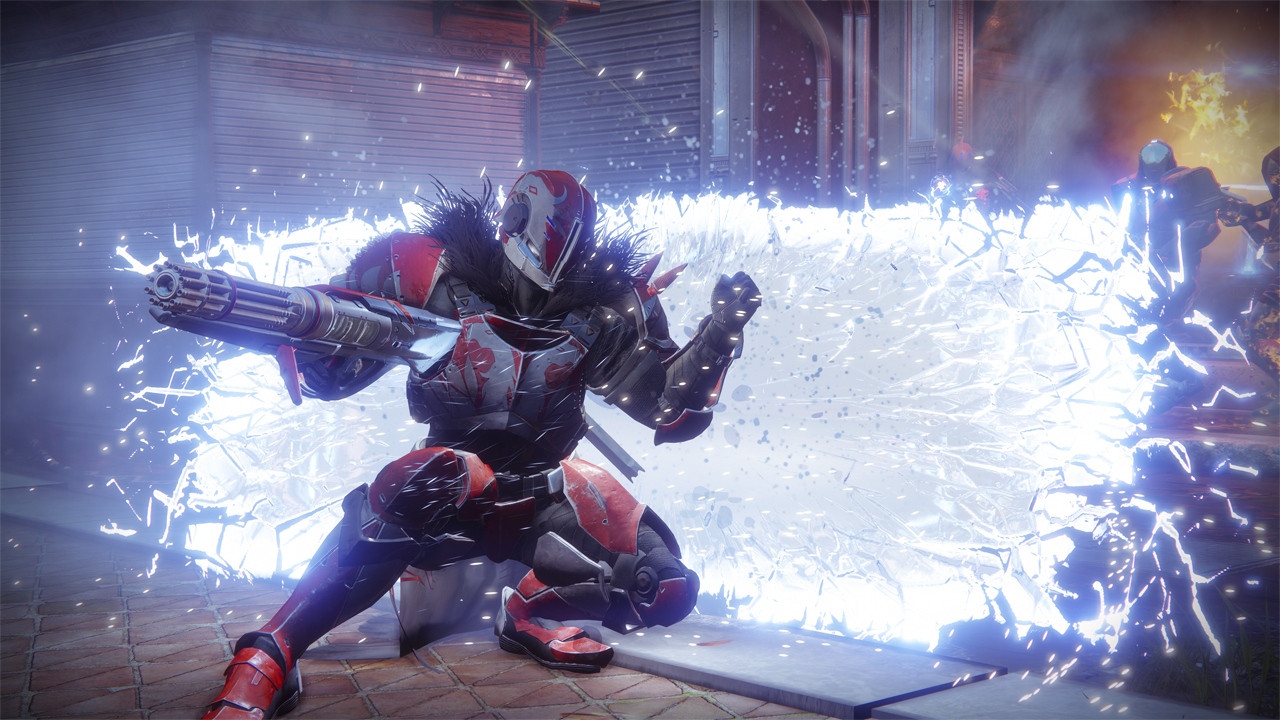
Destiny 2's new Crucible PvP is brilliant. The smaller focus, the reduction in super attacks and power weapons, and the greater influx of leaner, more tactical modes, is a wonderful reimagining of Destiny's Halo-inspired competitive multiplayer. I could never go back to the first game's more chaotic set-up now. But we need to talk about the MIDA Multi-Tool. Because the MIDA Multi-Tool is dominant in the wrong way.
Now I'm certainly not the type to cry "Nerf!" as soon as I run into an obstacle in a competitive game. My history with fighting games has taught me to always look for ways to adapt and overcome rather immediately ask for a change in the rules. Learning new ways to play is where half the fun of a competitive game comes from. And there are definitely ways to beat the all-powerful MIDA Scout Rifle, depending on the map, mode, and team strategies being played.
But the flipside of my adaptive attitude to this stuff is that I don't like anything that limits the options in a game, and right now the Multi-Tool is doing that a tad too often. Partly due to its speed, accuracy, and ridiculous stopping power, partly due to the omnipresence resulting from its relatively easy availability via an Exotic questline, the Multi-Tool - whether you can beat it or not - is dominating the way the Crucible is played. For me, it’s not so much a problem of difficulty, but more an issue of negative effects on gameplay variety. And in Destiny 2, there’s a lot of brilliant variety to be had.
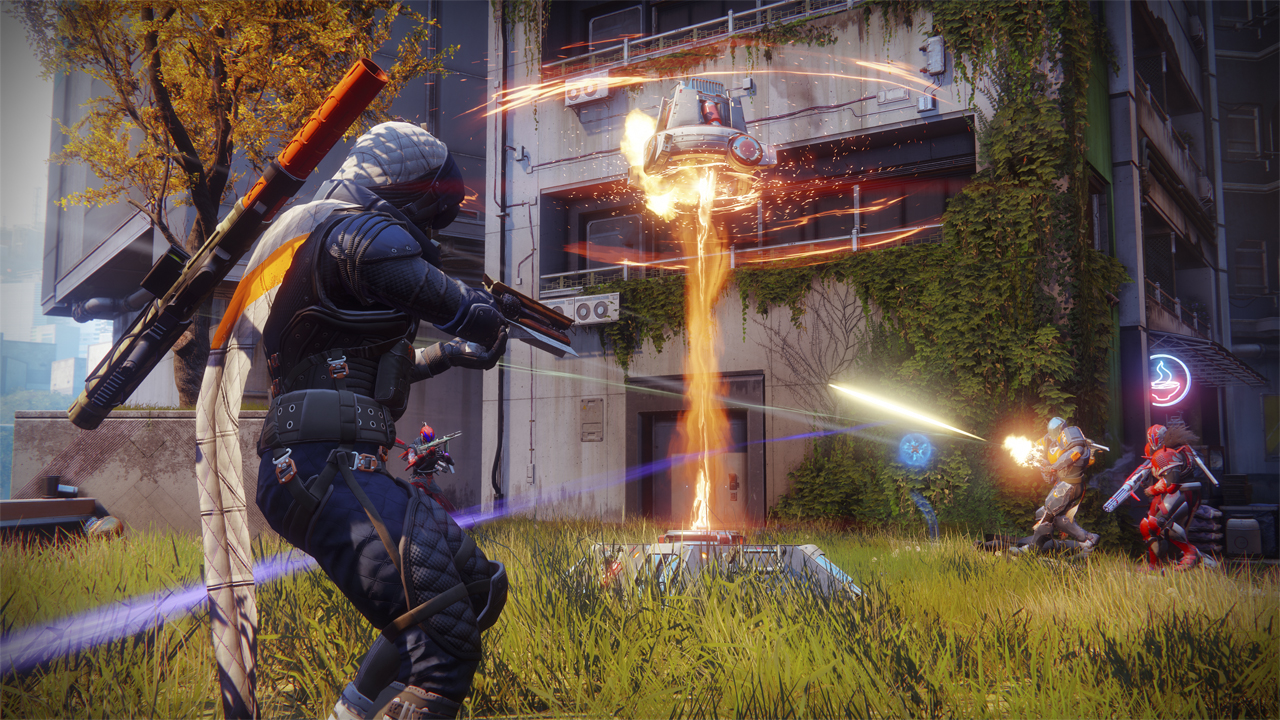
In the Quickplay modes, it's not such an issue. The full sandbox of Destiny gear and strategies gets used, and life is good. Things become more restricted in Competitive, with glorified sniper-vs-sniper action rising to the fore a tad too frequently. But Trials of the Nine? It might as well be a themed MIDAs-only mode. While I’ve never been one for chasing the meta, I totally understand the sense in equipping the canonical best gear for the job, especially in higher-stakes modes. But using fighting games as an allegory, balance patches happen in, say, Street Fighter, with the aspiration of making any character or play-style viable, in order to maintain a healthier, more exciting, varied game. Otherwise you just end up stuck with two Sagats turtling in the corner throwing endless fireballs at long range, which is what we have right now in the MIDA.
- Destiny 2 Crucible multiplayer: How each mode works, and how to win
- Essential Destiny 2 tips: The things we wish we knew before we started playing
I know that Bungie is aware of the issue, and I certainly don't want the response to be an absolute murder of the weapon. But there are ways of retuning it to maintain its power without it being the One True Gun. By all means keep its signature radar perk. It wouldn't be the MIDA without it. But it needs to have its raw power rethought in a way sympathetic to user and target alike.
A workable idea might be to replace its high-calibre rounds (a dominant perk in the Crucible on any weapon) with over-penetration, maintaining its overall damage output, but spreading it over multiple targets rather absolutely rattling the first player it hits. Its speed, accuracy, and handling are all fine. They're fundamental parts of the gun's personality, and make for an entirely potent (and unique) set-up in themselves. But for the health of the game, and not just my Guardian, the MIDA needs to be a good option, not the only option.
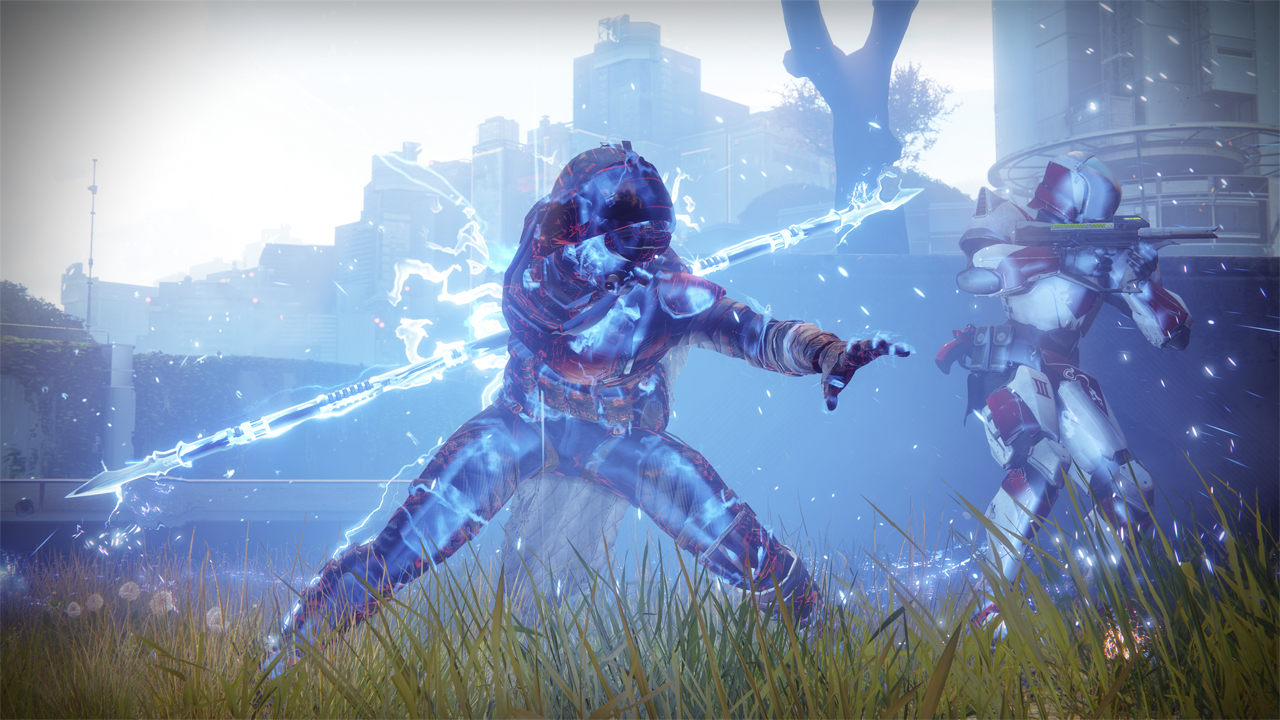
Beyond the MIDA? The only thing I'd address right now is the challenge facing solo players. Given the staunchly tactical, co-operative nature of the new Crucible, even decent solo players can have a nightmare of a time when matched with other solos against organised fireteams. If you play as a team, you do well. If you don’t, you die. That’s what I love about the new Crucible, but it means that if four solos go up against even two or three players in a party, there's a hell of an imbalance, in either of the standard playlists.
Obviously this is a tricky one to wrangle. You can hardly ban organised, seasoned players from Quickplay, for instance. And as nice an idea as Team Chat is, you can't make people use it. And they frequently don't. But if player population numbers work out, I wouldn't mind seeing a separate solo Crucible queue at some point. Even the most dedicated Crucible players can't always put a team of friends together, and if playing in those circumstances means risking a one-sided battering by players who can, then maybe we need to take another look at how matches are put together. This wasn’t an issue in the chaotic old Crucible, but it is now.
Adding the Crucible to the Guided Games program would be great too. Plenty of players aspire to Crucible success, but not all have the Fireteam back-up required to follow that path.



